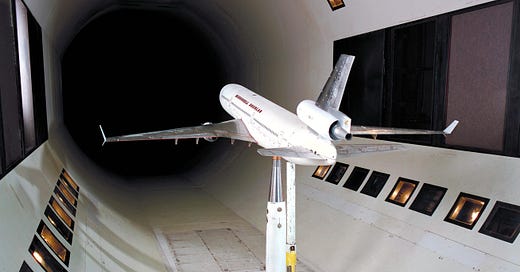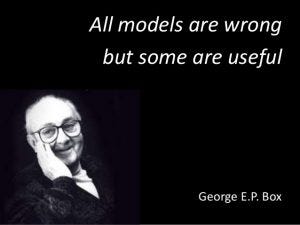Pt 1: Combining Simulation & Test Data into AI/ML Models
How mixing the two and folding into AI/ML models brings novel value. Part 1: Industry focus. Part 2: Methods focus.
Introduction
Physical measurement > Simulation > data-driven models … that’s typically the food chain as far as I’m concerned when it comes to the highest fidelity answers humans can get to our scientific and engineering questions.
Of course, each have their own respective sources of error and things they are strong/weak at. When taking measurements, generally we have uncertainty in the form of a bias (inherent to the equipment we use for measurement) and precision (variation in testing conditions, persons, procedures, etc.). In simulation, it’s a broad range of possible sources of error, highly dependent on which (of the many possible) methodologies we pick in our simulation project. Could be model-form based error form using simplified equations relative to the physics at hand, could be errors which emanate from our imperfect guesses of things like boundary conditions/material characteristics, discretization errors from meshing, deviation of CAD model from ‘actual’ manufactured geometries, and don’t forget the king -- human and process errors 😂
Nevertheless, we find a way.
One tool in our toolbox we can reach for is that of data-driven methods, which includes both AI and machine learning-based methods.
To set the stage, we have several traditional considerations:
When doing simulations, like CFD and FEA, we usually want validation/calibration against real-world tests. Many times it’s not possible, most times it’s only partially possible.
Conversely, experiments (e.g. wind tunnel tests, strain gauge measurements) yield more trustworthy data but are usually limited to only a few measured points or aggregate quantities.
By fusing these together, it’s an attractive ‘best of both worlds’ dream. This is one dream implicit to the concept a ‘Digital Twin’.
As a brief (very limited) introductory set of examples, we’re talking about things like correcting simulation bias with empirical data, reconstructing full 3D fields from sparse measurements, quantifying uncertainties, and accelerating design iteration while ensuring physical realism [1, 2]. Recent advances in machine learning provide tools to achieve these integrations. The result is improved accuracy and predictive power of CFD/FEA-based models, both for scalar performance metrics (like drag, lift, or maximum stress) and for full-field distributions (like pressure/velocity fields or stress/strain fields)…Among many other things.
In the following, we survey popular use cases of experiment-simulation fusion in key industries, and then detail the modeling approaches enabling these advances. And as always, we do this in a literature-review based way, heavily citing papers and combining the conclusions into a clear ‘map’ to paint the landscape.
An industry oriented review is helpful, which will be ‘part 1’ in this series, but it is also helpful to cast the overview in terms of classes of methodologies (which will be part 2 in this series).




